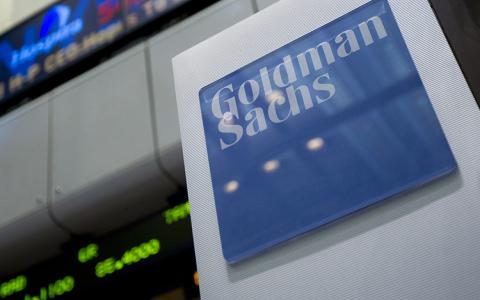
Goldman Sachs is offering discounts on its comprehensive technology stack to RIAs that place given levels of client assets into mutual funds and ETFs provided by Goldman Sachs Asset Management.
The technology offering, known as FinLife Partners, had been part of United Capital, which Goldman purchased for roughly $750m in 2019. United Capital has since been rebranded as Goldman Sachs Personal Financial Management. The division is led by United Capital founder Joe Duran (pictured).
FinLife Partners, which charges RIAs a flat fee based on the number of advisors who use the technology, credits advisors $25k on their invoice if they place $15m in assets into Goldman Sachs Asset Management funds, according to a pitch deck for the FinLife offering obtained by Citywire. FinLife is also offering a $25k discount if advisors place at least $50m in assets into Goldman Sachs Personal Financial Management’s unified managed account (UMA) program, according to the document. The document further states that there is no ceiling on the credit but that it can’t exceed the amount of the invoice.
UMAs are all-in-one investment accounts that combine funds and securities from different asset classes.
Compliance experts say the Goldman Sachs Asset Management discount could create a conflict of interest for RIAs that use FinLife.
‘It would appear this is a pretty clear conflict of interest,’ said Brian Hamburger, an attorney who serves as chief executive of RIA compliance consultancy MarketCounsel. ‘A conflict like this is a little difficult to disclose because you have to be able to articulate the impact that it’s going to have on clients.’
FinLife customers have disclosed the existence of the incentives Goldman is providing to RIAs.
Vestia Personal Wealth Advisors, a $340m RIA based in Fort Wayne, Ind., made the following disclosure to its clients in its Form ADV Part 2: ‘A conflict of interest exists when Sub-Advisors provide separate non-fiduciary services to Vestia as an incentive for assets placed on their platform(s). For example, Vestia utilizes FinLife Partners’ technology and client platform for the delivery of certain financial planning functions for our clients. Due to Goldman Sachs’ ownership of the FinLife technology, if Vestia refers greater than the required threshold(s) in client assets to United Capital and/or Goldman Sachs’ Sub-Advisor services, then Vestia’s fee for the FinLife technology platform will be reduced.’
A disclosure like Vestia’s may not be sufficient since it does not provide enough information about how large the discount is and how the discount is computed, said fiduciary governance attorney James Watkins.
‘This [conflict] needs to be clearly set out more than this disclosure provides,’ Watkins said. ‘An argument could be made that the language is intentionally confusing.’
Tommy Martin, Vestia’s chief executive, said that the firm has not placed any client assets into proprietary Goldman Sachs investment products.
‘Although contractually it may be considered a “discount,” and therefore require disclosure as a potential conflict of interest, the arrangement with Goldman Sachs functions more as a revenue sharing arrangement where Goldman’s cost is reduced if someone is already utilizing Goldman’s proprietary funds and therefore Goldman is passing some of that cost reduction along to the RIA firm,’ Martin said. ‘We are proud to partner with Goldman Sachs and have never felt undue pressure to utilize any of their proprietary investment offerings. In fact, Goldman Sachs has consistently reminded us that we have a fiduciary duty to our clients and should only utilize their funds if they meet a specific need for our clients in a manner that is better than other funds do.’
Chris Winn, chief executive of RIA compliance consultancy AdvisorAssist, added that the discounts could encourage advisors to place client assets into potentially more expensive and worse-performing investment products for the sake of obtaining a discount on their technology costs.
‘The advisor’s responsibility as a fiduciary is to only put their clients in the investments that are the best investments for them, irrespective of whether they’re getting anything else,’ said Winn.
A spokesman for Goldman Sachs did not provide comment prior to press time.
Goldman Sachs disclosed the existence of the discounts in its own Form ADV Part 2 for Goldman Sachs Personal Financial Management.
‘The third-party adviser pays FinLife Partners a flat fee for its services, a percent of advisory fees that the third-party adviser charges its client, and/or a flat fee for each client that uses FinLife Partners’ services,’ the firm said. ‘The fee may be reduced based on a percentage of the clients of the third-party adviser that use the technology services, GS PFM’s sub-advisory service, or mutual funds and ETFs managed by GSAM. Depending on how third-party advisers structure their agreement with their clients, their clients may pay a portion of the fees paid to FinLife Partners.’
For Hamburger, the existence of the discounts illustrates some of the perils that come with that selling an RIA to an asset manager.
‘Advisors have to wonder: “What is to become of my firm post-deal?” And I think too many advisors are not asking that question,’ Hamburger said. ‘But even more broadly, any time that someone is offering a price for your practice that is seemingly extraordinary with market norms, you also have to be asking that question.’
This article originally appeared on CityWire.



